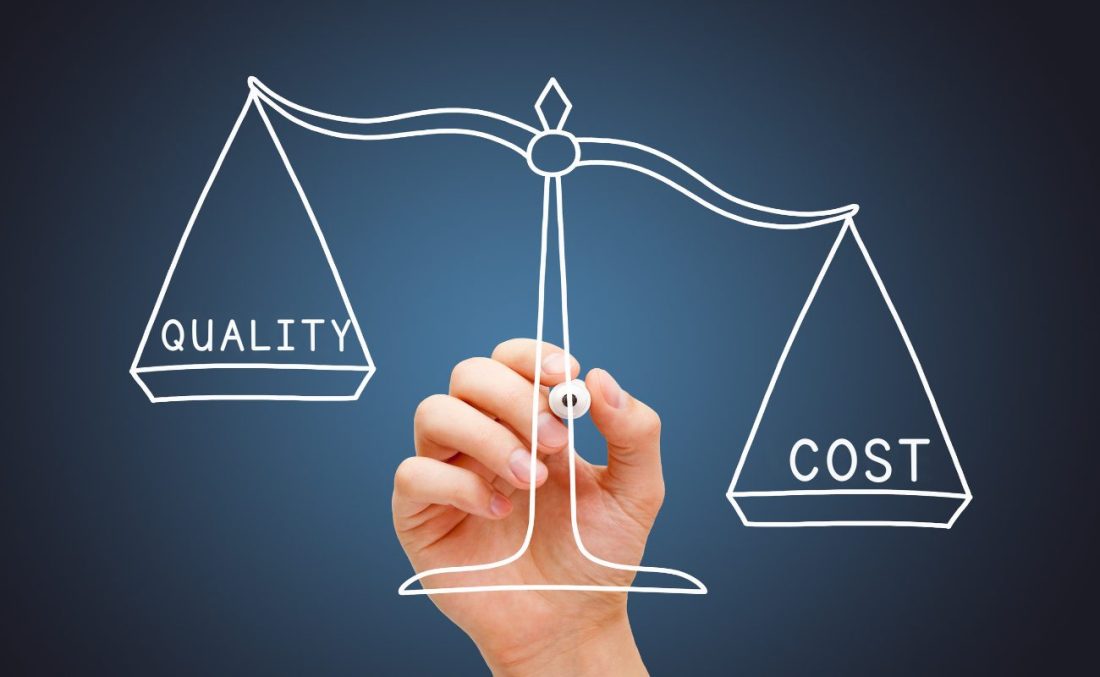Rethinking the Trade-Off: Quality and Cost in China Sourcing
May 21, 2025

Imagine this: Years ago, an importer of hunting apparel decided to source a jacket from China using professional China sourcing services. The goal? A durable outerwear piece with a faux leather shoulder patch. But when the samples arrived, the sourcing team had not only beaten the target price—they had used real leather instead of imitation. The end product offered higher value at a lower cost, enabling the company to undercut competitors and drive a tenfold increase in sales.
True story.
It also reveals a deeper truth: quality and affordability are not mutually exclusive when sourcing from China.
In global procurement, the phrase “you get what you pay for” is often misunderstood. Many assume that lower pricing guarantees lower quality—but the relationship between cost and quality is far more complex. In this article, we’ll explore how experienced sourcing teams can secure top-tier quality at competitive prices—if they know how to define expectations, evaluate suppliers properly, and manage the process with discipline.
Why Quality and Price Aren’t Mutually Exclusive
China’s manufacturing ecosystem is broad and diverse. The same country that produces $5 sunglasses also manufactures components for Apple and Tesla. What matters isn’t just where you source—but how.
This is where China sourcing services come into play. A structured, expert-led approach ensures you don’t have to choose between cost and quality—you can have both with the right strategy.
The quote you receive from a supplier is determined by the quality you request. If you prioritize price and leave other parameters vague, you’ll likely receive a lower-end product. If you specify materials, tolerances, finishes, and quality control procedures, your pricing will reflect those demands.
Suppliers aren’t “cutting corners” on their own. They’re working within the constraints—or ambiguities—you provide.
Where Misalignment Happens
Many quality issues stem not from bad suppliers, but from unclear or missing specifications. It’s surprisingly common for buyers—especially first-time importers or startup teams—to overlook the level of detail needed.
That’s why a Product Specification Sheet (PSS) is essential. This should clearly outline:
- Material composition and grade
- Dimensions and tolerances
- Surface treatments or finishes
- Performance and safety standards
- Packaging and labeling requirements
- Testing or certification needs
- Quality control procedures and checkpoints
Without these, a supplier will fill in the blanks—and that can lead to mismatched expectations.
Not All Suppliers Are Created Equal
Suppliers in China occupy distinct tiers. Some focus on low-margin, high-volume output for commodity products. Others serve global brands, investing in skilled labor, automation, and third-party certifications.
If your requirements involve precise engineering, regulated compliance, or premium branding, you’ll need a supplier that’s equipped—and experienced—to meet those standards.
To assess supplier fit, ask:
- Who are their current clients?
- What countries do they export to?
- Do they have experience with similar specs?
- Can they provide ISO, CE, CSA, or other relevant certifications?
Building the Right Strategy
You can’t control every variable in global sourcing—but you can control your process. Here’s how companies consistently succeed with both cost and quality:
- Define the Standard
Provide a PSS that details everything the supplier needs to know—before sampling begins. - Vet Suppliers Properly
Match your product to the right tier of supplier, and assess them based on capability, not price alone. - Maintain Open Communication
Be clear about what’s negotiable and what’s not. Share benchmarks and expected performance indicators. - Verify and Monitor
Conduct audits, third-party inspections, and regular performance reviews. - Invest in Relationships
Good suppliers get better over time. As trust builds, so does efficiency—often leading to cost savings.
Final Thoughts
The belief that “you get what you pay for” still holds—but in China sourcing, you get what you ask for. That means clearly defining your standards, aligning with the right supplier tier, and managing the process proactively.
When done well, China sourcing delivers products that outperform the competition—on quality, price, and time. As the hunting jacket story proves, it’s not about choosing between quality and cost. It’s about sourcing smart.
